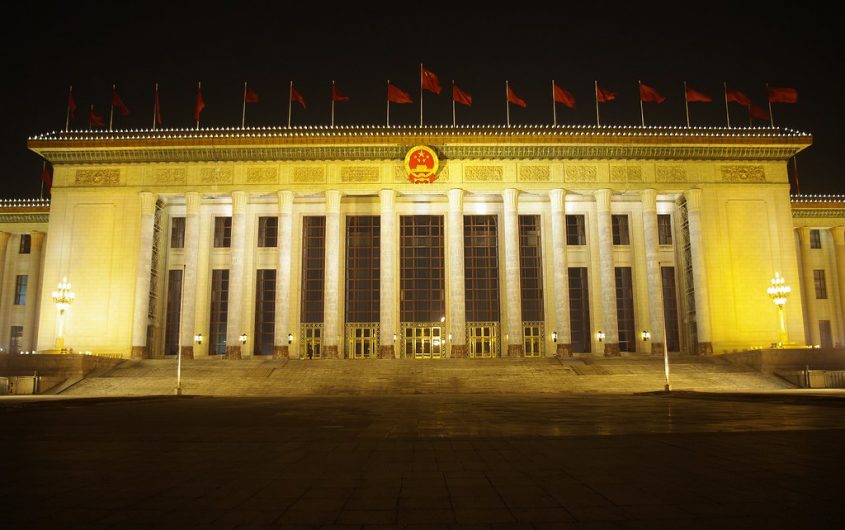
INABA Tomoaki via Flickr
China Plans for the Future

Yixiang Xu
China Fellow; Program Officer, Geoeconomics
Yixiang Xu is the China Fellow and Program Officer, Geoeconomics at AGI, leading the Institute’s work on U.S. and German relations with China. He has written extensively on Sino-EU and Sino-German relations, transatlantic cooperation on China policy, Sino-U.S. great power competition, China's Belt-and-Road Initiative and its implications for Germany and the U.S., Chinese engagement in Central and Eastern Europe, foreign investment screening, EU and U.S. strategies for global infrastructure investment, 5G supply chain and infrastructure security, and the future of Artificial Intelligence. His written contributions have been published by institutes including The Chinese Academy of Social Sciences, The United States Institute of Peace, and The Asia Society's Center for U.S.-China Relations. He has spoken on China's role in transatlantic relations at various seminars and international conferences in China, Germany, and the U.S.
Mr. Xu received his MA in International Political Economy from The Josef Korbel School of International Studies at The University of Denver and his BA in Linguistics and Classics from The University of Pittsburgh. He is an alumnus of the Bucerius Summer School on Global Governance, the Global Bridges European-American Young Leaders Conference, and the Brussels Forum's Young Professionals Summit. Mr. Xu also studied in China, Germany, Israel, Italy, and the UK and speaks Mandarin Chinese, German, and Russian.
__
After four days of deliberation in late October, the top leaders of the Chinese Communist Party (commonly known as CCP, but officially the Communist Party of China or CPC) issued a communique that summarizes the key guiding principles for its fourteenth five-year economic plan (2021-2025) for the country and a list of medium to long-term goals for China’s development. Although details of the plan will not be available until next spring when the National People’s Congress is expected to officially bestow its blessing, the new blueprint shows the CCP’s conscious efforts to expand China’s growth and influence while tightening its control over the direction of the Chinese economy. They also reflect the party’s hardened outlook to engage in protracted economic and strategic competition with the U.S., Europe, and much of the industrialized West.
The CCP’s main objective is to maintain China’s economic growth while in recovery from a turbulent spring ravaged by the COVID-19 pandemic and navigating what the party sees as an increasingly hostile environment for Chinese companies abroad. The plan points to Dual Circulation, a strategy that relies primarily on “internal circulation” (the domestic cycle of production, distribution, and consumption) and is supported by “external circulation” (China’s traditional export industry and international trade and investment) to drive growth. The party’s goal to develop China to the level of “moderately developed countries” by 2035 also entails an aggressive growth trajectory, which would see the country’s annual per capita income almost triple from $10,262 in 2019 to approximately $30,000 in a decade and a half.
The plan also calls for technology self-reliance in the face of the escalating Sino-U.S. rivalry that already saw Chinese technology companies threatened by U.S. sanctions, with Huawei cut off from advanced semiconductor chips and Tiktok forced to divest from its U.S. business. Going forward, China will double down on investments in domestic technology and innovation, pouring more state resources into emerging technologies such as 5G, AI, cloud storage, and Quantum computing to upgrade Chinese industries.
While these guidelines, together with other priorities including supply-side reform, poverty alleviation, and narrowing income gaps, seem to point to an inward turn by the CCP to address structural issues in China’s domestic economy and shield the country’s fortune from growing challenges abroad, they by no means indicate an abandonment of China’s global economic engagement for the past four decades or Beijing’s increasingly assertive foreign policy under CCP general secretary Xi Jinping.
Top-rank party leaders maintain that decoupling from the U.S. is unrealistic and that China is committed to further opening up its economy. Indeed, foreign companies employ hundreds of thousands of workers in China and Chinese companies still rely on the U.S. and other advanced economies for vital technologies. Even as Washington cautions businesses over Chinese ties, foreign capital continues to pour into China amid its rapid economic recovery. China still seeks to benefit from global trade and investment, but Beijing wants to rid itself of the constraints posed by economic interdependence with the U.S. and much of the industrialized West and turn the symbiotic relationship toward China’s favor. In the official language of the party, China will “rely on the advantage of China’s large market to promote international cooperation.”
The new five-year plan will intensify state efforts under the Made in China 2025 and China Standard 2035 strategies to make the country a leader in critical and emerging technologies with the added goals of increasing Chinese technologies’ global market share, defining global standards, and shaping international tech governance. CCP leaders also hope that increased domestic productivity and consumption would boost China’s leverage to set the terms of its bilateral and reginal economic engagements. And Beijing will keep pushing Xi Jinping’s signature Belt-and-Road Initiative to advance Chinese strategic interests around the globe.
Although ambition doesn’t guarantee success, for China critics in the U.S., Europe, and elsewhere, China’s new masterplan doesn’t assuage their concerns. Beijing’s focus on domestic R&D and the “internal circuit” could result in even heavier state subsidies and extended market barriers in strategic industries. A calculated, partial decoupling from the industrialized West may also diminish U.S. and European leverage to protect their and their allies’ interests vis-à-vis China. The plan emphasizes deepening Beijing’s control over Hong Kong and Taiwan as well as projecting Chinese influence around the world. That means further strengthening the CCP’s concentrated power at home and silencing criticism over its human rights practices or foreign policy conduct abroad.
As transatlantic public opinion toward China has grown more negative, China’s new strategic blueprint reinforces the daunting challenge facing the United States and Europe. China’s global reach opened up more theaters for strategic competition and also created multiple fissures within the traditional liberal democratic alliance. The U.S. and Europe have differing views on a new Great Game in the Indo-Pacific and Washington’s increasingly focused attack on the CCP is not condoned by many European partners. Even the transatlantic partnership itself has weakened over the course of the Trump presidency. But sheer necessity is propelling Europe and the United States to tackle the China challenge together. And they need a plan of their own.








